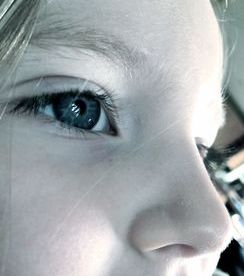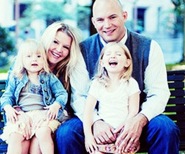Identifying Child PTSD Symptoms Following an Accident
Today, I’d like to review child PTSD symptoms, and ways you can help your child cope and heal emotionally after a car accident.
A relative of mine recently fell victim of a hit-and-run car crash with her two children in the car, ages 4 and 7. Thankfully there were no long-term, serious injuries. The aftermath was a very familiar scene: initial shock, police, paramedics, and inconsolable crying kids. After a lights and siren ambulance ride to the hospital, a very soft spoken pediatric nurse was able to comfort the children and reassure them everything was going to be okay.
Weeks following the accident, physical injuries healed, but emotional injuries began to surface – fear, anxiety, crying, and nightmares.
The children were suffering from traumatic stress caused by what they felt and witnessed during the accident. Realizing that the situation was not getting better, the parents sought the help of a pediatric medical team specifically trained in recognizing and dealing with emotional stress in children. The team was able to identify child PTSD symptoms, also known as emotional “red flags,” and develop a program to educate and treat both parents and the kids.
Even Minor Crashes Create Emotional Stress
It is estimated, approximately 176,000 children under 15 years of age are involved in injury crashes each year. In Oregon, recent statistics indicate almost 4,900 children were involved in reportable injury auto crashes each year.
Car accidents can be especially traumatic for children even though they may not be physically injured. Approximately 15% – 25% of children involved in car accidents develop symptoms of depression, even months after the accident. Seemingly minor accidents can create a loud noise and strong jolt, which can be very frightening and cause a child to scream and cry in distress for several hours. In more significant collisions, witnessing others who were injured or suffering injuries themselves will often cause long-term emotional and developmental effects on a child.
How to Recognize Child PTSD Symptoms: “Red Flag” Stress Behaviors
A professional pediatric doctor is most qualified to determine PTSD symptoms in children and will be able to decide the appropriate level of care and support. Parents need to be able to recognize “red flag” behaviors and identify when their child is in distress in order to get them the help they need as soon as possible. The National Child Traumatic Stress Network has some great resources.
Behaviors of concern seen in children, by age, include (adapted from an article written by Dr. Jo D. Osofsky, PhD):
Ages 5 and under: Returning to earlier behaviors such as thumb sucking, bedwetting, fear of darkness, separation anxiety or excessive clinging.
6-11 year-olds: Disruptive behaviors, extreme withdrawal, inability to pay attention, sleep problems and nightmares, school problems, psychosomatic complaints, including stomachaches and headaches or changes in usual behavior.
12-17 year-olds: Sleep problems and nightmares, school problems including changes in performance and truancy, risk-taking behavior, problems with peers, changes in usual behaviors, psychosomatic complaints including stomachaches and headaches, depression or suicidal thoughts.
Assess The Emotional Needs of Your Child

A fabulous website to help you assess the emotional needs of your child after an accident is: aftertheinjury.com.
This website is full of advice! In particular, they offer insight into typical behaviors for children after an accident to help you answer the questions like “When should I be concerned?”, or “How long do traumatic stress reactions last?” Typical reactions in children include:
- Re-experiencing: Reliving what happened
- Avoidance: Staying away from reminders
- Hyper-arousal: Feeling anxious or jumpy
- Other concerns: Changes in behavior
In addition, they offer practical advice for helping your child cope with the stress of the accident including:
- Let your child know they are safe.
- Allow children to talk about their feelings, and their worries, if they want to.
- Go back to normal routines.
- Increase time with family and friends.
- Take time to deal with your own feelings.
- Keep in mind people in the same family can react in different ways.
How Can You Reduce The Risk of Serious Injury For Your Child?
The #1 action you can take to minimize the risk of serious injury in a motor vehicle accident: Age-appropriate car seats!
Always make sure your child passengers are buckled in age and size-appropriate car seats, booster seats, or seat belts.The facts speak for themselves – properly installed and applied car seats reduce the risk of death by 71% for infants and 54% for toddlers, while booster seats reduce the risk for serious injury by 45%. While most parents believe they properly use car and booster seats, an OHSU study in 2014 revealed that 93 percent of families in Oregon made at least one critical error when positioning their infant in a car seat or when installing the seat — a mistake that may well put their infant at increased risk for injury in a crash. The Kohl’s Car Seat Outreach Project now includes a weekday Inspection Station at Doernbecher Children’s Hospital — a free service to have your child’s car seat evaluated for proper installation.
What To Do If Your Child Has Been Involved in a Car Accident?
If your child is involved in a car accident the most important thing you can do is to seek immediate medical attention. In serious car crashes it is standard procedure for emergency responders to transport children (and adults) directly from the accident scene via ambulance or Life Flight straight to the nearest hospital emergency room or trauma center.
Oftentimes, however, the car accident was the type where the scope and severity of injuries to the child is not obvious. In those cases parents should 1) immediately take their children to a hospital emergency room or an urgent care facility for evaluation and treatment. It is extremely important that parents follow the instructions of the medical providers when their child is discharged. This means closely monitoring their child’s symptoms, complaints and behavior. It also means filling and following prescriptions as directed, and following up with specialists. Finally, parents should make a timely follow up appointment with their child’s pediatrician – the doctor who knows their child the best.
2) While your child is recovering from his or her physical injuries from the car accident, it is important to watch for child PTSD symptoms of emotional and psychological trauma. Look for the “red flag” stress behaviors listed above.
3) A qualified professional can help your child directly as well as teach the parents how to help their child after a traumatic event such as a car accident. DO NOT DELAY in seeking the appropriate medical care if you suspect that your child is suffering from emotional or psychological trauma after a car accident.
Do Auto Insurance Policies Provide Medical Coverage for Injuries to Children?
The answer is yes.
Under Oregon law, all motor vehicle insurance policies issued in Oregon contain Personal Injury Protection (“PIP”) medical coverage. PIP medical coverage is “no-fault” medical coverage. Children injured in car accidents have a minimum of $15,000 of medical coverage for accident related treatment within one year of the accident.
PIP medical coverage is available to injured children regardless of which driver caused the accident. Even if the child’s parent was responsible for the crash, the child is entitled to PIP medical coverage.
PIP medical coverage includes reasonable and necessary medical treatment for both physical and emotional injuries. It is important for parents to know that their auto insurance company will pay for their child’s emergency room treatment, physical therapy and counseling if the treatment stems from the car accident.
If the child uses all of their PIP medical coverage and needs more treatment, most private health insurance policies will also pay for necessary medical treatment, including emotional and psychological injuries caused by the car accident. After a traumatic car accident parents should contact their auto insurance company immediately to apply for PIP medical coverage for their child and give every medical provider the PIP claim number and contact information for billing purposes. In cases where the medical bills are high enough that they exhaust the PIP medical coverage, parents should then provide their child’s private health insurance information to the child’s medical providers and review the policy to see what medical services it does and does not cover.
Portland Accident Attorney, Travis Mayor

If you or your child have been injured as a result of another person’s conduct, and you are looking for a skilled attorney to lead you through the insurance and legal roadblocks, please call today to schedule a free and confidential case evaluation. Local (503) 444-2825, Toll free 1-800-949-1481, or email travis@mayorlaw.com.
For additional information about personal injury cases, insurance, and maximizing your financial recovery, I recommend the following articles on my Blog:
What To Expect During A Free Consultation With An Attorney?
Help, My Child Is Being Bullied – What Should I do?
How to Avoid Getting Duped By Insurance Companies
